Drawing is a wonderful hobby, a professional skill, and a form of expression that requires not only talent and practice but also the right tools. Whether you’re a beginner or an experienced artist, having the right drawing utensils can make a huge difference in your results and your enjoyment of the process. In this article, we’ll explore some of the most common drawing utensils and their properties, so you can choose the ones that suit your needs and preferences.
1. Pencil
When it comes to drawing pencils, artists have a wide range of choices. The type of pencil an artist uses depends on their personal preference and the requirements of the artwork. However, there are some common types of drawing utensils that are used by artists, including graphite pencils, charcoal pencils, colored pencils, and mechanical pencils.

Graphite pencils: These are the most commonly used pencils for drawing. They come in various grades of hardness, ranging from 9H (hardest) to 9B (softest), and are ideal for creating detailed, precise lines.

Charcoal pencils: These are similar to graphite pencils, but are made from compressed charcoal. They create a rich, dark line and are often used for shading and creating dramatic effects.

Colored pencils: These are pencils with colored lead, and are used for creating colorful drawings and illustrations. They are available in a wide range of colors and can be used to create detailed, realistic artwork.

Mechanical pencils: These are pencils that have a thin, replaceable lead that is advanced by a mechanical mechanism. They are ideal for creating precise, detailed lines and are often used for technical drawing and drafting.
The choice of drawing utensils will depend on the type of artwork you want to create, the level of detail you want to achieve, and your personal preferences. It’s a good idea to experiment with different types of pencils to find the ones that work best for you.
| Tool | Available Hardness and Lead Sizes | Blendable | Erasable | Sharpenable | Boldness of Lines | Color Availability | Precise Lines | Refillable |
|---|---|---|---|---|---|---|---|---|
| Graphite pencils | Wide range | Yes | Yes | Yes | No | No | Yes | No |
| Charcoal pencils | Limited | Yes | No | No | Yes | No | No | No |
| Colored pencils | Limited | Yes | Yes | Yes | No | Wide range | No | No |
| Mechanical pencils | Wide range | No | Yes | Yes | No | Small range | Yes | Yes |
If you want to know more pencil brands, please click here: Top 10 Pencil Brands In The World
2. Pen
Pens are versatile drawing utensils used in various drawing applications. They can be used for outlining, inking, and writing. Pens are available in many different types, each with unique characteristics that suit different needs.

Ballpoint pens: They are the most common type of pen, and they use a small rotating ball at the tip to transfer ink onto paper. They are widely available, inexpensive, and often used for everyday writing purposes.

Gel pens: They use a similar mechanism to ballpoint pens but with thicker and more opaque ink. The ink in gel pens is usually water-based and dries quickly, making them ideal for drawing and writing in a wide range of colors.

Felt-tip pens: They also known as marker pens, have a porous tip that allows the ink to flow freely. They come in various tip sizes and are available in both water-based and permanent ink types. Felt-tip pens are ideal for drawing, coloring, and outlining.
When choosing a pen as a drawing utensil, consider the type of artwork you will be creating, the paper you will be working on, and the desired effect you want to achieve. Different pens will produce different line qualities, ranging from thin and delicate to bold and expressive.
| Tool | Ink | Drying time | Smoothness | Line width | Color options | Fade resistance | Bleed-through | Water resistance |
|---|---|---|---|---|---|---|---|---|
| Ballpoint Pens | Oil-based ink | Quick | Very smooth | Limited range | Limited | Low | Minimal | Low |
| Gel Pens | Gel ink | Quick | Smooth | Wide range | Wide range | Moderate | Minimal | Moderate |
| Felt-Tip Pens | Water-based ink | Slow | Moderate | Wide range | Wide range | High | Significant | High |
3. Erasers
Erasers are essential drawing utensils for drawing as they allow artists to correct mistakes and refine their artwork. There are several types of erasers that are commonly used for drawing:

Kneaded erasers: These are soft, pliable erasers that can be molded into any shape, making them ideal for erasing small areas or fine details. These drawing utensils are also effective at lifting graphite and charcoal from the paper without leaving any residue.

Vinyl erasers: They also known as plastic erasers, are made of soft, pliable vinyl material. They are tough and durable, but if not used carefully, they can tear the paper. These erasers can erase almost anything, including ink, often in white color. Additionally, vinyl erasers should be stored in a cool, dry place to prevent them from becoming hard and brittle.

Gum erasers: These erasers are made from a blend of materials, including rubber and pumice, and are effective at removing pencil marks without damaging the paper. They are ideal for erasing colored pencils or pastels. They are effective at removing graphite and charcoal from the paper but may leave some residue.
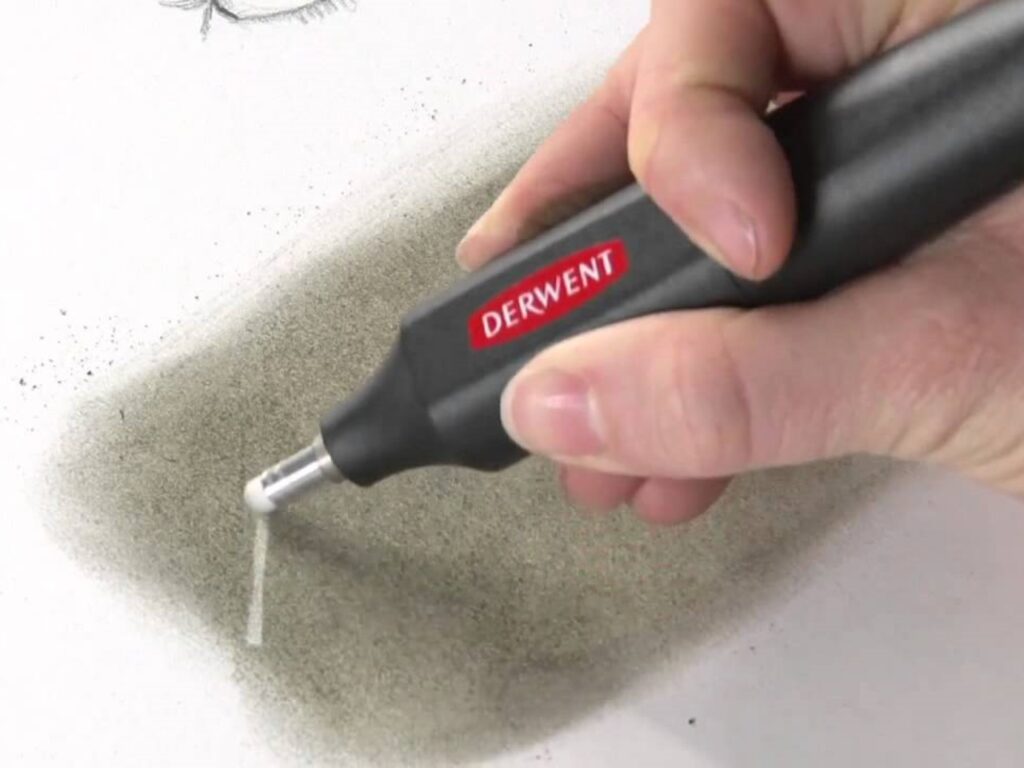
Electric erasers: These are battery-powered erasers that are ideal for erasing small areas quickly and efficiently. These drawing utensils are particularly useful for technical drawing or when working with ink.
The choice of eraser will depend on the type of artwork you want to create, the type of pencil or medium you are using, and your personal preferences. It’s a good idea to experiment with different types of drawing utensils to find the ones that work best for you.
| Tool | Moldable/Versatile | Clean Erasing | Highlight Creation | Effective over time | Good for delicate paper | Soft/Pliable | Noise |
|---|---|---|---|---|---|---|---|
| Kneaded eraser | Yes | Yes | Yes | No | Yes | No | No |
| Vinyl eraser | No | Yes | No | N/A | No | No | No |
| Gum eraser | Yes | Yes | No | N/A | Yes | Yes | No |
| Electric eraser | No | Yes | Yes | N/A | Yes | No | Yes |
4. paper
The choice of paper as drawing utensils depends on the medium used, the desired effect, and personal preference. Here are some types of paper commonly used for drawing:

Sketch paper: this is a lightweight, inexpensive paper that is ideal for quick sketches and preliminary drawings. It’s available in various weights and textures, from smooth to rough, and can be used with a variety of drawing media. This drawing utensil is commonly used by artists, designers, and architects to quickly capture ideas and concepts in a sketch form before finalizing a finished piece.

Drawing paper: this is a heavier-weight paper that is designed for more finished drawings. It’s available in a range of textures, from smooth to rough, and can be used with a variety of drawing media, including pencils, charcoal, and ink. The weight of the paper is important, as heavier paper can handle more layers and erase without tearing or wrinkling.

Bristol board: this is a smooth, heavyweight paper that is commonly used for ink drawings, technical illustrations, and other detailed work. It is a smooth, heavy-weight paper that is ideal for technical drawing and illustration. It’s available in various weights and can be used with a variety of media, including pencils, ink, and markers.

Watercolor paper: this is a heavyweight paper that is designed for use with watercolor paints. It is available in both cold-pressed and hot-pressed finishes. This drawing utensil is a heavy, textured paper that is designed to hold watercolor paint without buckling or warping. It’s available in various weights and textures, and can also be used with other wet media, such as gouache and acrylics.

Pastel paper: Pastel paper is a type of paper that is specifically designed to be used with pastels. It is heavier and has a rougher surface than regular drawing paper, which allows the pastel to adhere to the paper better. The rough surface also helps to create a textured effect in the pastel drawing. Pastel paper comes in a variety of colors, including neutral tones, bright colors, and dark shades, which can be used to enhance the color of the pastel drawing.

Charcoal paper: Charcoal paper is designed specifically for use with charcoal. It is a rougher texture than regular paper. It allows the charcoal to stick to the surface better. Charcoal paper is typically made from heavy, textured paper that is either white or neutral in color, such as gray or tan. The tooth of the paper can affect the amount of charcoal that is picked up by the paper, as well as the intensity of the lines and shading.

Toned paper: Toned paper is a type of paper that is specially designed for artists to draw on with a variety of mediums such as graphite, charcoal, colored pencils, and pastels. The paper is pre-tinted with a neutral or colored background, which creates a mid-tone surface that provides an immediate value range to the drawing. It comes in a variety of colors. Each color of the paper provides a different mood and tone to the drawing.

Tracing paper: Tracing paper is a thin, translucent paper that is used for tracing designs, drawings, or patterns. It is usually made from sulfite pulp or vegetable fibers and comes in different weights and finishes. This drawing utensil is a popular tool among artists, architects, and designers because of its versatility and convenience. It is commonly used to transfer or copy drawings, create overlays, and for preliminary sketches.

Mixed media paper: Mixed media paper is a type of paper that is designed to work with a wide range of materials, including wet and dry media. It is usually made from a combination of materials, such as wood pulp and cotton, to provide the ideal texture and thickness for different art techniques. It is a versatile paper that is suitable for a variety of art applications, including drawing, painting, collage, printmaking, and more.
The choice of paper will depend on the specific needs of the drawing, including the type of media used, the desired texture, and the level of detail. It’s important to experiment with different types of paper to find the one that works best for your specific needs.
| Paper Type | Texture | Weight (lb) | Thickness | SUITABLE MEDIA | BLEED-THROUGH |
|---|---|---|---|---|---|
| Sketch paper | Smooth | 50-70 | Medium | Pencil, pen, ink | Minimal |
| Drawing paper | Medium | 80-100 | Medium-heavy | Pencil, pen, ink | Minimal |
| Bristol board | Smooth | 100-130 | Heavy | Pencil, pen, ink | Minimal |
| Watercolor paper | Textured | 140-300 | Heavy | Watercolor | Some |
| Pastel paper | Textured | 80-100 | Heavy | Soft pastels | Minimal |
| Charcoal paper | Textured | 60-90 | Medium | Charcoal | Some |
| Toned paper | Textured | 80-100 | Medium-heavy | Colored pencils, graphite | Minimal |
| Tracing paper | Smooth | 25-50 | Thin | Tracing, sketching | Yes |
| Mixed media paper | Varies | 90-140 | Medium | Multiple media | Minimal |
5. Pencil Sharpeners
Pencil sharpeners are important drawing utensils for artists who work with pencils, as they help to maintain a sharp and precise point on the pencil. There are several types of pencil sharpeners that are commonly used for drawing:
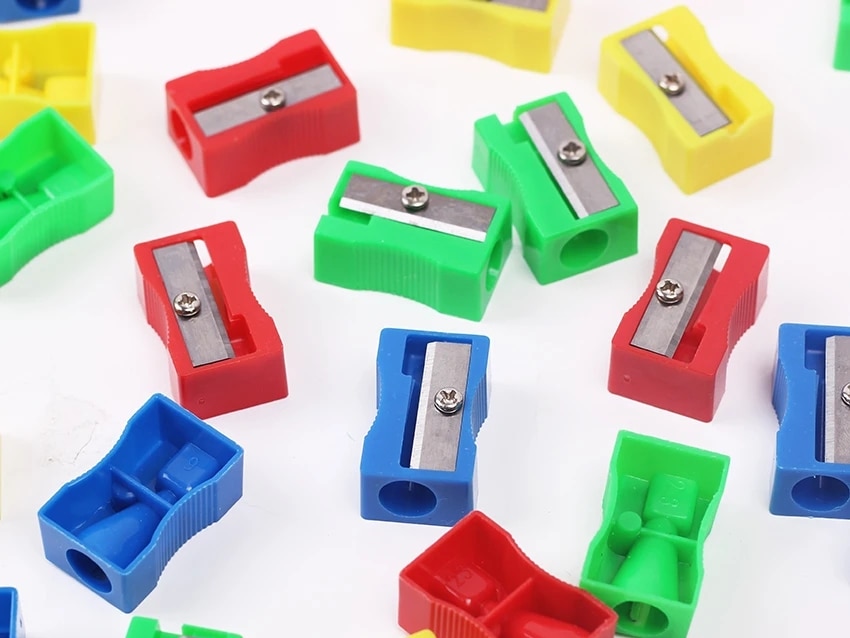
Manual pencil sharpeners: These are small, handheld sharpeners that are operated by hand. They are portable and can be used to sharpen pencils on the go. They are available in a variety of styles, including single and double-hole sharpeners, and can accommodate different pencil sizes.
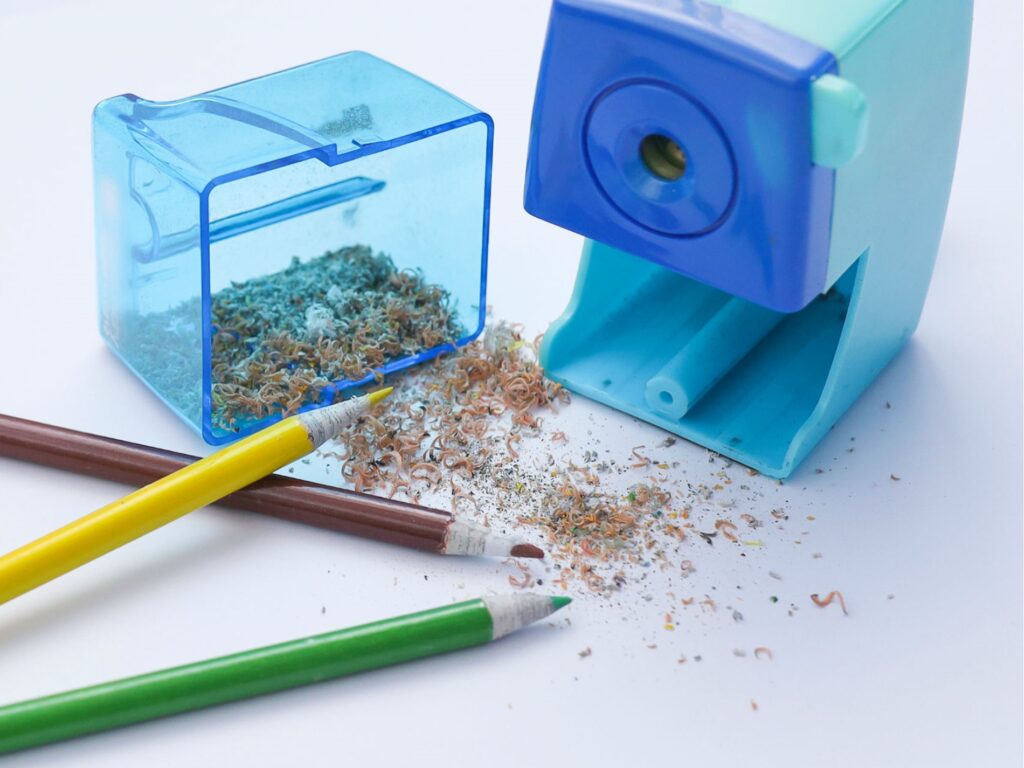
Electric pencil sharpeners: These are powered by electricity and are ideal for sharpening large volumes of pencils quickly and efficiently. They come in a range of sizes and styles and can accommodate different pencil sizes.

Pencil Knife: These are sharpeners that use blades to sharpen the pencil. They are often used for sharpening charcoal and other soft pencils, as they can create a sharp point without breaking the lead.
The choice of pencil sharpener will depend on personal preference, the type of pencil being used, and the volume of pencils that need to be sharpened. It’s a good idea to experiment with different types of pencil sharpeners to find the ones that work best for you.
| Tool | Portable | Ease of Use | Compatible Pencils | Point Quality | Noise | Power Source | Skill Required | Blade Replacement |
|---|---|---|---|---|---|---|---|---|
| Manual pencil sharpener | Yes | Easy | Limited | Uneven/Jagged | Low | N/A | Low | No |
| Electric pencil sharpener | No | Easy | Wide Range | Even/Consistent | High | Power/Battery | Low | Yes |
| Pencil Knife | Yes | Difficult | Wide Range | Very Sharp | N/A | Manual | High | Yes |
6. Watercolor painting
Watercolor painting requires specific drawing utensils to create the desired effects and maintain control over the paint. Here are some drawing utensils that people should prepare for watercolor painting:

Watercolor paints: Watercolor paints come in various forms, including tubes and pans. They are available in a wide range of colors and can be mixed together to create new colors.

Watercolor paper: Watercolor paper is specifically designed to hold the water and pigment of the paint without warping or deteriorating. It’s available in different weights and textures, with rougher textures creating more pronounced brushstrokes.

Brushes: Brushes come in a variety of shapes and sizes and are used to apply the paint to the paper. Watercolor brushes are often made with natural hairs, such as sable, or synthetic materials that can mimic the softness and flexibility of natural hairs.

Water containers: Clean water is essential for watercolor painting, and artists need containers to hold water for cleaning their brushes and diluting the paint.

Palette: A palette is a surface on which to mix and hold the paint. It can be a traditional palette made of plastic or porcelain or a makeshift palette such as a ceramic plate or a piece of wax paper.

Masking tape: Masking tape can be used to create sharp edges or to protect certain areas of the paper from the paint.

Paper towels: Paper towels can be used to blot excess water and paint from the brushes and paper.
Overall, the choice of drawing utensils will depend on personal preference and the style of watercolor painting. It’s important to use high-quality materials to achieve the best results.
7. Oil paints
Oil painting requires specific drawing utensils to create the desired effects and maintain control over the paint. Here are some drawing utensils that people should prepare for oil painting:

Oil paints: Oil paints are made with pigments and oils, and are available in a wide range of colors. They can be mixed together to create new colors, and can also be thinned with solvents to create different effects.

Canvas or canvas board: Canvas is the traditional surface for oil painting. It’s available in various sizes and can be primed with gesso to create a smooth surface for painting.

Brushes: Brushes come in a variety of shapes and sizes, and are used to apply the paint to the canvas. Oil painting brushes are often made with natural hairs, such as hog bristle, or synthetic materials that can mimic the stiffness and texture of natural hairs.
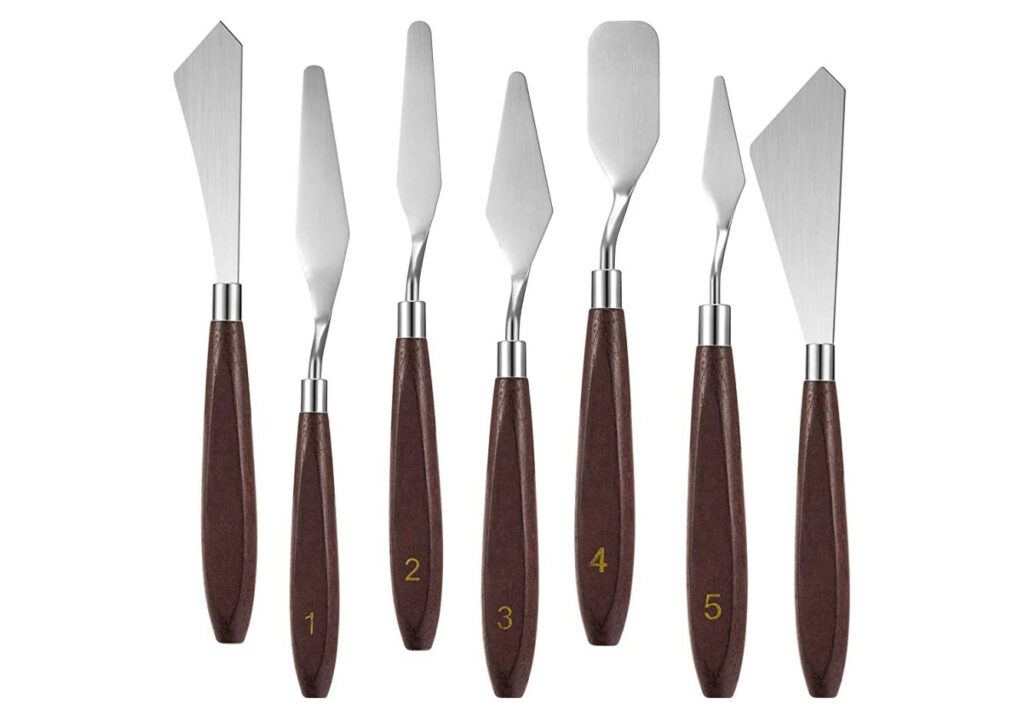
Palette knives: Palette knives are used to mix and apply the paint to the canvas. They come in various sizes and shapes and can be used to create textured effects.

Solvents: Solvents such as mineral spirits or turpentine are used to thin the paint and clean brushes and palettes. It’s important to work in a well-ventilated area when using solvents.

Mediums: Mediums are used to alter the consistency and drying time of the paint. They can be added to the paint to create different effects, such as increasing the glossiness or transparency of the paint.

Easel: An easel is a support for the canvas while painting. It can be adjusted to different heights and angles to accommodate the artist’s preferences.

Rags or paper towels: Rags or paper towels can be used to clean brushes and palettes, and to wipe away excess paint.
Overall, the choice of drawing utensils will depend on personal preference and the style of oil painting. It’s important to use high-quality materials to achieve the best results.
8. Containers
When it comes to storing and transporting painting works, there are several options that artists can choose from. Here are some common containers that artists use:
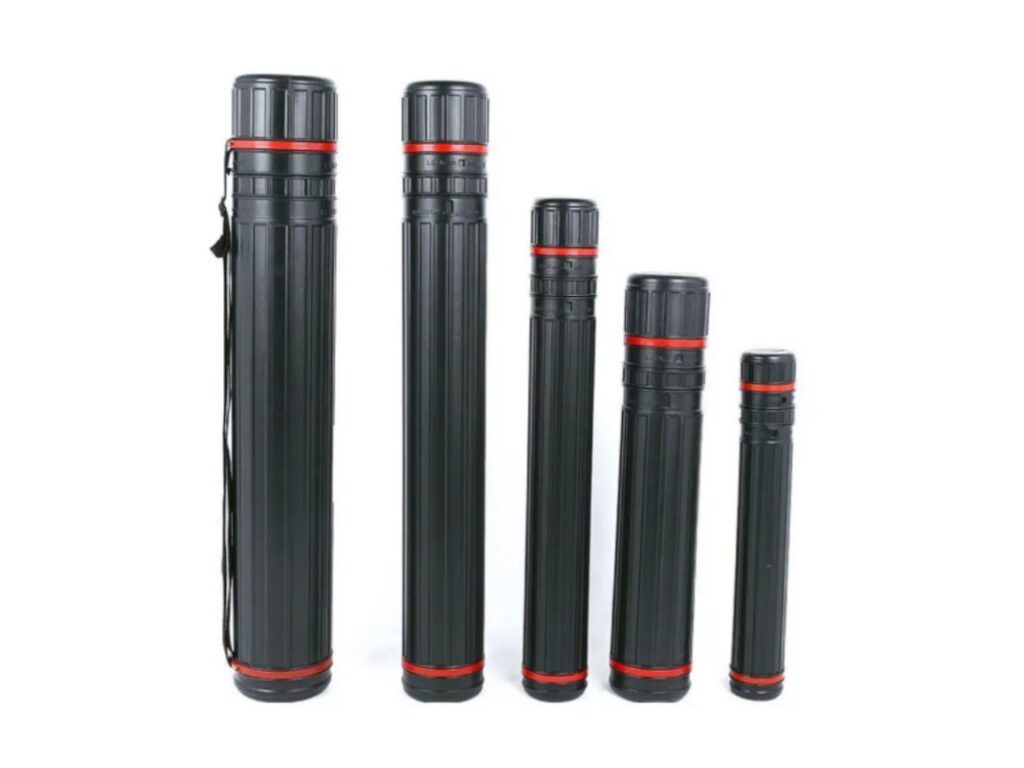
Art storage tube: Art storage tubes are long, cylindrical containers that are designed to hold rolled-up paintings or other works on paper. They come in various sizes and materials, including cardboard and plastic, and are ideal for shipping artwork without damaging it.

Art portfolios: Art portfolios are large, flat folders that are designed to hold the artwork. They come in a variety of sizes and materials, including leather, nylon, and plastic, and can be used to store and transport paintings, drawings, and other works on paper.

Framed paintings: Framing a painting helps protect it from dust, moisture, and UV rays, which can cause fading, discoloration, and other forms of damage over time. The right frame can complement and enhance the artwork, adding an extra layer of visual appeal to the piece. Framed paintings can be easily displayed and moved from one location to another, making them a great option for those who like to switch up their décor or move frequently.

Art storage rack: An art storage rack is a type of storage system designed specifically for artists and art collectors to store their artwork in a safe and organized manner. These racks are typically made of metal or wood and can hold a large number of artworks of various sizes and types. The type of storage rack chosen will depend on the types and sizes of artworks to be stored, as well as the available space and budget.

Art storage boxes: Art storage boxes are boxes with lids that are designed to hold the artwork. They come in a variety of sizes and materials, including cardboard, wood, and plastic, and can be used to store and transport paintings, drawings, and other works on paper.

Bubble wrap and packing materials: Bubble wrap and other packing materials are used to protect artwork during shipping and transport. They can be wrapped around paintings and other works to prevent them from getting damaged.
Overall, the choice of container will depend on the size and type of artwork being stored or transported, as well as the level of protection needed. It’s important to use containers that are sturdy and secure to prevent damage to the artwork.
9. Other Tools
When it comes to drawing, there are several measuring and geometry drawing utensils that can be used to ensure accuracy and precision. Here are some of the drawing utensils:

Ruler: A ruler is a flat, straight edge with markings in inches, centimeters, or both. It is used to measure straight lines and draw straight edges.

Pencil compass: A compass is a tool with two legs, one with a pointed end and the other with a pencil or pen. It is used to draw circles and arcs of specific sizes.

Protractor: A protractor is a tool used to measure angles. It has a semi-circular shape with degree markings and is used to measure and draw angles accurately.

T-square: A T-square is a straight edge with a perpendicular arm that is used to draw straight lines at right angles to the paper’s edge.

French curve: A French curve is a plastic or metal tool with a curved edge that is used to draw smooth, curved lines.
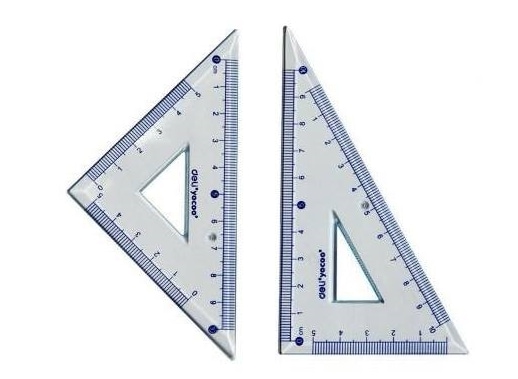
Set square: A set square is a triangular-shaped tool used to draw and measure angles. It comes in different sizes and is used to create precise angles.
These drawing utensils can be used together or individually to create accurate and precise drawings. It’s important to choose high-quality tools to ensure accuracy and precision.
Conclusion
In conclusion, drawing utensils are an essential part of any artist’s toolkit, and choosing the right ones can make a significant impact on the quality and style of your work. By understanding the properties and uses of different pencils, erasers, sharpeners, papers, and other tools, you can experiment, improve, and enjoy the process of drawing. Don’t be afraid to try new things, and remember that the best utensil is the one that feels comfortable and inspiring to you. Happy drawing!






